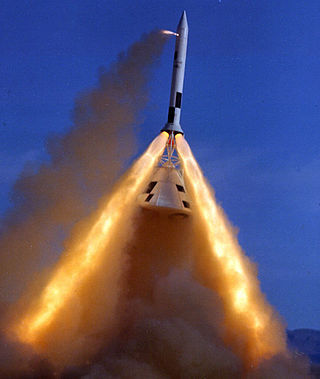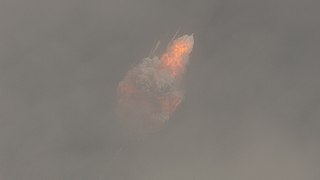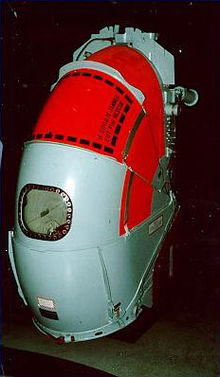
Soyuz is a series of spacecraft which has been in service since the 1960s, having made more than 140 flights. It was designed for the Soviet space program by the Korolev Design Bureau. The Soyuz succeeded the Voskhod spacecraft and was originally built as part of the Soviet crewed lunar programs. It is launched on a Soyuz rocket from the Baikonur Cosmodrome in Kazakhstan. Between the 2011 retirement of the Space Shuttle and the 2020 demo flight of SpaceX Crew Dragon, the Soyuz served as the only means to ferry crew to or from the International Space Station, for which it remains heavily used. Although China did launch crewed Shenzhou flights during this time, none of them docked with the ISS.

Soyuz 7K-T No.39, was an unsuccessful launch of a crewed Soyuz spacecraft by the Soviet Union in 1975. The mission was expected to dock with the orbiting Salyut 4 space station, but due to a failure of the Soyuz launch vehicle the crew failed to make orbit. The crew consisted of commander Vasily Lazarev, and flight engineer Oleg Makarov, a civilian. Although the mission was aborted and did not accomplish its objective, the craft exceeded common space boundaries and therefore is recognized as a sub-orbital spaceflight, which the crew survived. The crew, who initially feared they had landed in China, were successfully recovered.

A space capsule is a spacecraft designed to transport cargo, scientific experiments, and/or astronauts to and from space. Capsules are distinguished from other spacecraft by the ability to survive reentry and return a payload to the Earth's surface from orbit, and are distinguished from other types of recoverable spacecraft by their blunt shape, not having wings and often containing little fuel other than what is necessary for a safe return. Capsule-based crewed spacecraft such as Soyuz or Orion are often supported by a service or adapter module, and sometimes augmented with an extra module for extended space operations. Capsules make up the majority of crewed spacecraft designs, although one crewed spaceplane, the Space Shuttle, has flown in orbit.

A launch escape system (LES) or launch abort system (LAS) is a crew-safety system connected to a space capsule. It is used in the event of a critical emergency to quickly separate the capsule from its launch vehicle in case of an emergency requiring the abort of the launch, such as an impending explosion. The LES is typically controlled by a combination of automatic rocket failure detection, and a manual activation for the crew commander's use. The LES may be used while the launch vehicle is still on the launch pad, or during its ascent. Such systems are usually of three types:

Soyuz TMA-10 was a human spaceflight mission using a Soyuz-TMA spacecraft to transport personnel to and from the International Space Station (ISS). The mission began at 17:31:09 UTC on April 7, 2007 when the spacecraft was launched from the Baikonur Cosmodrome by a Soyuz FG launch vehicle. Soyuz TMA-10 brought to the station two members of ISS Expedition 15 crew, along with one spaceflight participant. It remained at the space station as an escape craft until it was replaced by Soyuz TMA-11 in October 2007.
Lifepod is a 1993 television film reworking of the Alfred Hitchcock film Lifeboat. It starred Ron Silver, Robert Loggia, Kelli Williams & C. C. H. Pounder, with Silver also directing. It aired on Fox Network in June 1993. Lifepod moved the action from an ocean-bound lifeboat on Earth to a spacecraft's escape pod, with the characters the survivors of a sabotaged spacecraft.

The Orion Multi-Purpose Crew Vehicle is equipped with a launch escape system. Orion has several abort modes. Some of these may not use the LAS itself, but would use the second stage of the SLS, or even the Orion vehicle's own propulsion system instead.

The Soyuz 7K-L1 "Zond" spacecraft was designed to launch cosmonauts from the Earth to circle the Moon without going into lunar orbit in the context of the Soviet crewed Moon-flyby program in the Moon race. It was based on the Soyuz 7K-OK. Several modifications reduced vehicle mass and increased circumlunar capability. The most notable modifications were the replacement of the orbital module with a support cone and a high-gain parabolic antenna, the removal of a reserve parachute, and the addition of the gyro platform and star navigation sensors for the far space navigation. The spacecraft was capable of carrying two cosmonauts. At the start of flight testing, there were serious reliability problems with the new Proton rocket, the 7K-L1, and the Soyuz 7K-OK that the L1 was based on.
A pad abort test is a kind of test of a launch escape system which conducted by setting the system along with the spacecraft still on the ground and let the system activate to carry the spacecraft flying away, then separate in the air and make the spacecraft land safely. The purpose of the test is to determine how well the system could get the crew of a spacecraft to safety in an emergency on the launch pad. As the spacecraft is set still on the ground, the test is also called "zero-altitude abort test" in against "high-altitude abort test".

Soyuz TMA-01M was a Soyuz flight that transported three members of the Expedition 25 crew to the International Space Station. TMA-01M was the 107th flight of a Soyuz spacecraft, and the first flight of the modernized TMA-M series. The spacecraft remained docked to the space station during Expedition 25, to serve as an emergency escape vehicle. The spacecraft's COSPAR ID was 2010-052A.

Dragon 2 is a class of partially reusable spacecraft developed and manufactured by American aerospace manufacturer SpaceX, primarily for flights to the International Space Station (ISS). SpaceX also launches private missions, such as Inspiration4 and Axiom Mission 1. There are two variants of the Dragon spacecraft: Crew Dragon, a spacecraft capable of ferrying four crewmembers, and Cargo Dragon, a replacement for the original Dragon 1 used to carry freight to and from space. The spacecraft consists of a reusable space capsule and an expendable trunk module. The spacecraft launches atop a Falcon 9 Block 5 rocket and the capsule returns to Earth through splashdown.

In the event of catastrophic failure, the Soyuz spacecraft has a series of automated and semi-automated abort modes to rescue the crew. The abort systems have been refined since the first piloted flights and all abort scenarios for the Soyuz MS are expected to be survivable for the crew.

Soyuz MS-10 was a crewed Soyuz MS spaceflight that aborted shortly after launch on 11 October 2018 due to a failure of the Soyuz-FG launch vehicle boosters. MS-10 was the 139th flight of a Soyuz spacecraft. It was intended to transport two members of the Expedition 57 crew to the International Space Station. A few minutes after liftoff, the craft went into contingency abort due to a booster failure and had to return to Earth. By the time the contingency abort was declared, the launch escape system (LES) tower had already been ejected and the capsule was pulled away from the rocket using the solid rocket jettison motors on the capsule fairing. Both crew members, Roscosmos cosmonaut Aleksey Ovchinin and NASA astronaut Nick Hague, were recovered in good health. The MS-10 flight abort was the first instance of a Russian crewed booster accident in 35 years, since Soyuz T-10-1 exploded on the launch pad in September 1983. On 1 November 2018, Russian scientists released a video recording of the mission.
An escape room is a type of puzzle game room, which people enter to solve a puzzle to exit the room.
Zond program was a Soviet robotic spacecraft program launched between 1964 and 1970, using two spacecraft series, one for interplanetary exploration, and the other for lunar exploration.

SpaceXCrew Dragon In-Flight Abort Test was a successful test of the SpaceX Dragon 2 abort system, conducted on 19 January 2020. It was the final assessment for the Crew Dragon capsule and Falcon 9 launch system before they would be certified to carry humans into space. Booster B1046.4 and an uncrewed capsule C205 were launched from Launch Complex 39A (LC-39A) on a suborbital trajectory, followed by an in-flight abort of the capsule at max Q and supersonic speed. The test was carried out successfully: the capsule pulled itself away from the booster after launch control commanded main engine shutdown and landed safely.

Soyuz MS-22 was a Russian Soyuz spaceflight to the International Space Station with a crew of three launched from Baikonur Cosmodrome on 21 September 2022. The launch, previously planned for 13 September 2022, was subsequently delayed to 21 September 2022, for a mission length of 188 days.














